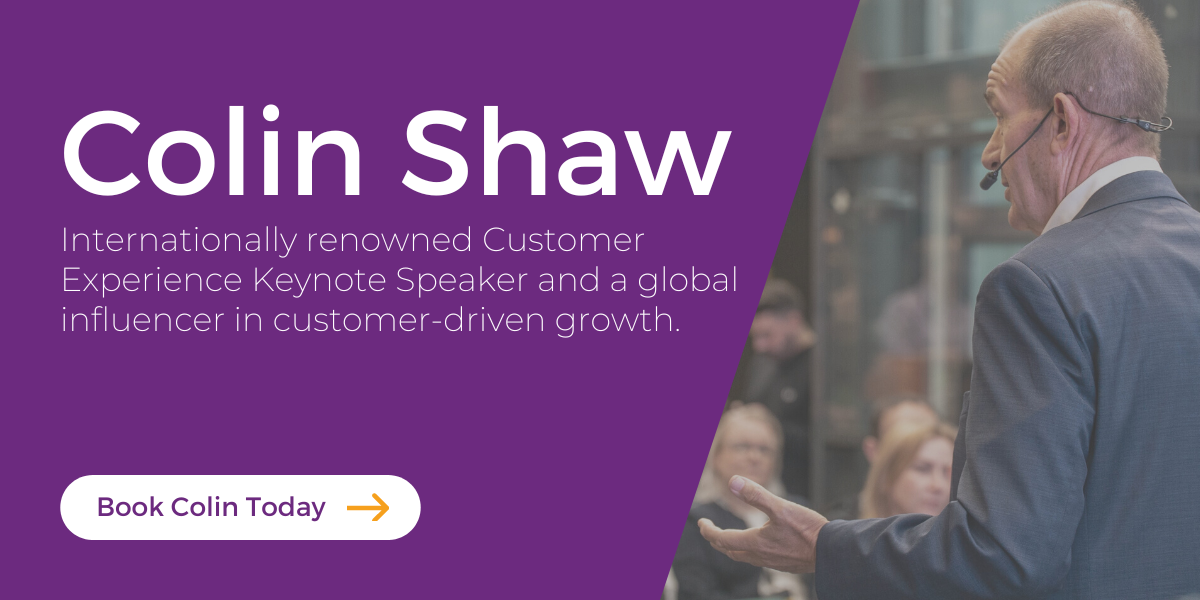Your brand is in a relationship with your customers. Like any relationship, some of them are healthy while others are not. Unfortunately, people often form codependent or dysfunctional relationships with brands. To help yours be more beneficial than not, we have five rules about how to build strong brand relationships with your customers.
We all have relationships with brands. It’s interesting how we perceive brands, which are, at their core, a series of legalistic trademarks that companies have. Nevertheless, we treat them as if they’re an entity, almost human-like, and we form something close to a personal connection with them.
Brands have a type of corporate structure with trademarks and copyrights. They have colors and taglines, and guidelines for their messaging. However, this part isn’t relevant to customers. What matters is the brand in your customers’ minds, memories, thoughts, and emotions. Forming an attachment is vital, here, establishing an Emotional Bank account.
Watch Colin talking about this on YouTube:
Subscribe to our YouTube channel here to see all the latest videos!
You might remember Stephen Covey, author of The 7 Habits of Highly Effective People, first proposed the concept of the Emotional Bank Account. You have these accounts with people in your lives, and they make deposits and withdrawals in them all the time.
For example, you have an Emotional Bank Account with the people in your family. Sometimes, your family will do things that annoy or anger you, but you usually also have times when they do something that endears them to you, too. These emotional transactions balance out.
We have the same relationships with our brands. For example, my Emotional Bank Account with Apple is well in the black. But they have taken withdrawals from time to time. However, I will remain loyal to them if their emotional account balance remains in the black.
Therefore, our five rules are to help you develop a brand worthy of your customers opening an Emotional Bank Account with you, which, in turn, is valuable to your bottom line. These include:
- Focus on emotional benefits and value to your customers, not just on product features.
- Develop a brand personality that aligns with your target customer’s emotions, values, and beliefs.
- Remember the power of storytelling in creating emotional connections with your brand.
- Deliver on your promises.
- Remember, people don’t form relationships with clouds.
Let’s take a closer look at each of these, shall we?
Rule #1: Focus on emotional benefits and value to your customers, not just on product features.
For me, a brand is a construct in my mind, not the products and their features. It’s the emotional attachment I have n t how fast the processor works on the Hokey-Cokey 4000.
Here is an area that Apple does well with on the whole. They do not always have the highest performance on every feature of their iPhones. Android phones often introduce popular features that Apple doesn’t even have. Many other phone brands have outperformed iPhones in specific areas for many years. It wasn’t a secret either; Samsung featured this fact in their ads.
However, the iPhone was still selling despite this fact, and it was at least partly because of their relationship with their customers. Apple is outstanding at focusing on these emotional benefits. They also lean heavily into the design that makes their products intuitive. As a result, they held onto their market share by focusing on emotional benefits and value, not just product features.
It’s not that the features don’t matter. On the contrary, they are a significant part of the experience. But they should serve the relationship.
Therefore, remember that a competitor can release a product with better features. Sometimes, it’s easy for them to do so. However, they will have a more challenging time infiltrating your emotional connection with your customers.
Rule #2: Develop a brand personality that aligns with your target customer’s emotions, values, and beliefs.
Brands have personalities. It’s not product features, either, but traits that it conveys.
So, what is your brand like? Is it fun? Adventuresome? Cheeky? Classic? Whatever traits your brand communicates should be something your target customer values. This strategy works as long as what you are trying to do is possible.
For example, an advertising campaign for an insurance company in England featured customers so delighted with their insurance quotes over the phone that they fell on the floor laughing hysterically. However, the company keeps you waiting on the phone for half an hour in reality, which is far from a laughing matter. This example demonstrates how being impractical with your brand message can damage your relationship with customers or, in my case, prevent a connection from the beginning.
Therefore, this rule shows us that developing a personality is not enough. It has to be a personality that matters to your customers, consistent with what they want in that category, and you can deliver on all those things.
Rule #3: Remember the power of storytelling in creating emotional connections with your brand.
Human beings are storytellers and story processors. We remember information better when it comes in the form of a story. We also fill in the blanks when we hear stories instead of when we hear basic information.
Stories are what humans tell each other. It’s how we connect to other humans by telling them about our day or past experiences.
So, if you want people to form a relationship with your brand, tell a story about your brand. This is part of why you hear so many s stories about the founders creating their company in their parent’s garage. All of these founder myths are part of the brand’s story.
Rule #4: Deliver on your promises.
When we fail to deliver on our promises, that erodes trust. It erodes emotional attachment, killing a relationship or turning it into a negative or toxic relationship.
Trust is the foundation for any good relationship. So, make customers trust you.
However, while trust is fundamental to relationships, it’s not the whole thing. Other emotional connections are necessary for healthy relationships, too. With customers, our emotional research indicates that happiness and pleasure combined with trust is a winning combination for customer relationships. But being cared for and valued are essential too. Many emotions are necessary for a relationship, with faith at the base of it all.
Therefore, brands should consider what will differentiate them from the competition. In my view, the critical consideration here is whether that differentiator drives value for the customer.
Nearly every organization recognizes that trust is crucial to their customer relationships. Some don’t establish it well, but not because they don’t know it’s essential. So, you can’t stop there.
One last caveat: Trust is a long-term goal with long-term benefits. If you need short-term benefits, you might need to use some other emotional connections to get those. Relying on trust to deliver those results isn’t a winning strategy for short-term goals.
Rule #5: Remember, people don’t form relationships with clouds.
Branding can’t exist as an ephemeral, intellectual exercise. People need substantive concepts they can latch onto if they’re going to form a relationship with them. Airy, misty visions will not get customers to develop a relationship, nor will front-line employees be able to deliver on those ideas.
Having this ephemeral view of what the world looks like with intellectualization woven into it is okay. These theoretical types of constructs are often a topic of this newsletter. However, I am a passionate advocate of making the theoretical practical. Part of the practicality is the ability to articulate your ideas to others. So out-there, hippy-dippy ideas have their place, but these places are not in the relationship formation parts of your brand.
For example, a mobile company I once worked with wanted to inspire its customers. However, “inspirational” is a strange area for a mobile company. How does one do that, and how does the call center make that interaction inspirational? How does this translate into practical, real-world action?
Therefore, your brand must have concepts that can tie into specific actions to take within your customer experience. Moreover, as we said in Rule #2, it must align with what people want from a company in your business vertical. After all, most people don’t want their phone to inspire them; they want it to work.
So, when forming a solid relationship with customers, it is essential to follow these five rules. When you focus on the emotional benefits to customers, you can develop a brand personality that aligns with their values. Moreover, using stories helps them connect with your brand.
However, on the practical side, it is essential that your brand delivers on its promises. Plus, you have to give people something real to connect to, or you will miss an opportunity, or, worse, give your competition the chance to instead.
Colin has spoken at hundreds of conferences, including some of the world’s largest brands. Talk to Colin about how he can speak ‘in person’ or ‘virtually’ at your conference. Click here.





